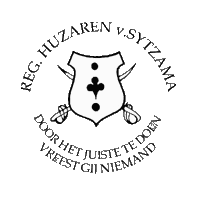
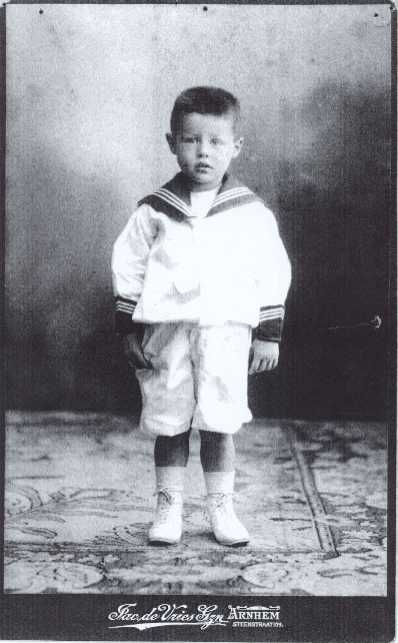
Alexandre Louis Francois Jacques de Vries. 1900-May 12, 1940.

Bronzen Leeuw (posthuum) bij K.B. van 9 mei 1946 # 6.
"So long as we live, they too shall live, for they are now a part of us, as we remember them".
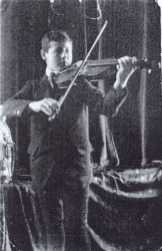
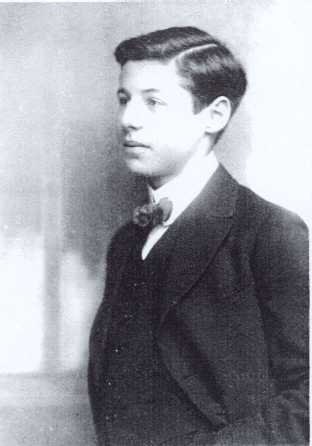
Lex de Vries was the eldest son of Louis de Vries and Clara Dalberg
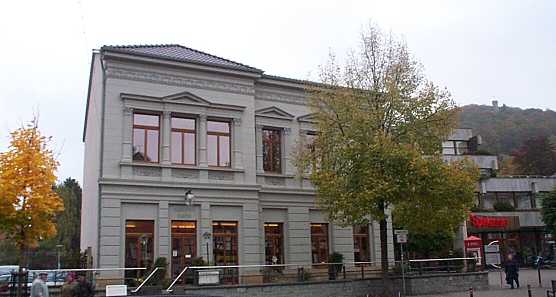
Today as it looks, the Dalberg house in Niedermarsberg "... Milein Cosmann remembers meeting a blind and ageing German poet by the name of Olden in London at the end of the nineteen-forties, who came from near Marsberg, and when she mentioned her mother's maiden name, he said "Oh yes, that house in Marsberg had a pretty girl looking out of every window... "
The Dalberg family resided in Marsberg at least since the early part of the 19th century. In 1823, the birth of a son Feidel to Philipp and Fromente Dalberg was entered in the Birth Register, as well as that of a son Michel to Abraham and Sara Dalberg. According to the Property Register of 1830, the Dalberg families were owners in Niedermarsberg High Street. But it can be supposed that the family already lived in Marsberg in the 18th century.
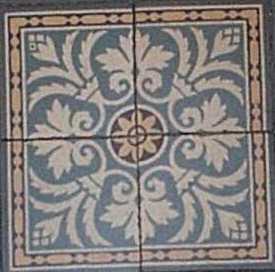
The house of Alex and Emilie Dalberg was located at 26 High Street. Afterwards, the family of their daughter Mathilde, who married the tradesman Louis Nordheimer, lived in that house .
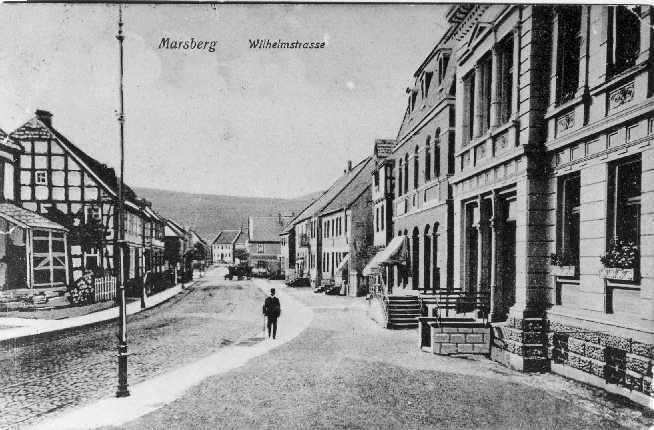
© Marsberg's City Archives
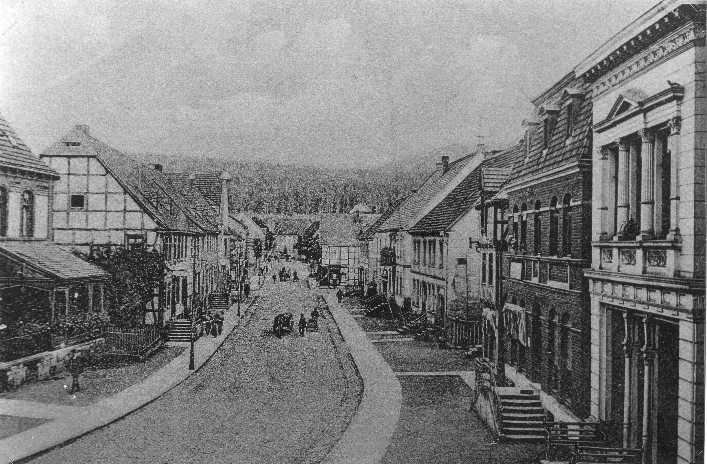
© Marsberg's City Archives
The Dalberg house in the High Street of Niedermarsberg around 1900. In the foreground on the right, one can see the building n° 26 High Street. This house in the centre of the small town, used both as a residence and for business, considerably beautifies the thoroughfare in the heart of the city. Its massive frame, as a post-classical cube with a stucco decoration of historical themes, is a testimony to the penetration of new "founder-period" architectural forms into the hitherto parallel-to-the-street-built residential and trade buildings characteristic of the mid-nineteenth century. In 2001 this house was placed under histrorical protection and underwent exemplary restoration over the past years.
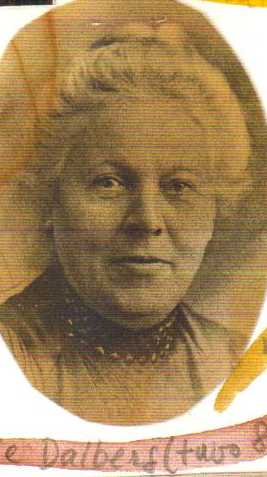
Emilie (“Mielchen”)Dalberg (nee Heymann)(Steele 1850-Marsberg 1920).

Abraham (“Alexander”) Dalberg (Marsberg 1839 - Marsberg +/-1893), a tradesman of Niedermarsberg, married Emilie (“Mielchen”) Heymann (1850 Steele-Marsberg 1920)on 9 September 1873. They had 8 daughters.

The three standing figures at the back are from left to right : Sophie, Mathilde and Johanna. The three younger figures in the middle are from left to right Marthe, Hedwig and Helene (Leni). And the two seated figures are (left) Clara, Lex'es mother, and (right) Rosa, the eldest.
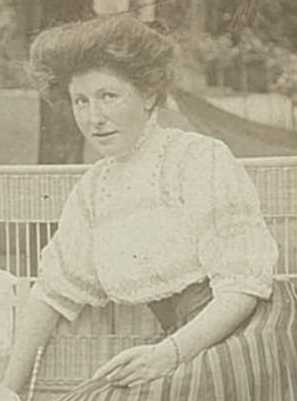
Clara Dalberg was born on September 29, 1877 in Niedermarsberg. On August 18, 1899, she married the tradesman Louis de Vries, born on March 31, 1874 in Rotterdam,then a resident of Amsterdam. She was one of eight sisters:
Rosa was born on July 31, 1874 in Niedermarsberg. On May 17, 1895, she married the tradesman Felix Buchthal, born on August 5,1867 in Hohenwepel, district of Warburg, and resident of Dortmund.
Mathilde was born on November 29, 1875 in Niedermarsberg. On June 28, 1895, she married the tradesman Louis Nordheimer, born December 14, 1862 in Niedermarsberg and died 9 October 1926 in Niedermarsberg.
Martha was born on July 28, 1884 in Niedermarsberg. On December 4, 1908, she married the tradesman Siegfried Braunschweig, born September 22, 1876 in Feudingen and resident of Düsseldorf.
Johanna was born on June 13, 1881 in Niedermarsberg. On March 11 1904, she married Dr Isaac Herz, MD, born January 30, 1871 in Bochum and a resident of Bochum.

Sophie de Vries (nee Dalberg) painted by her friend Isaac Israels.
Sophie(Sophia)was born on September 3, 1879 in Niedermarsberg. On February 2, 1900, she married the tradesman Samuel de Vries, born October 1 1872, in Rotteram, and resident of the Hague.
Hedwige(Hedwig)was born November 18, 1887 in Niedermarsberg. On March 26, 1910, she married the tradesman Selig Rosenblatt, born 10 August 1875 in Stadt Lengsfeld, and a resident of Gotha.
Helene was born in Marsberg on October 11 1891. On 5 September 1913, Helene married Hugo Cosmann, born 9 October 1879 in Essen and a resident of Gotha.She emigrated to England in the thirties with her husband who was at the time an industrialist from Dusseldorf(steel), with their two children : a son named Cormelius who then went on to the US (now dead), and a daughter, Milein. She became quite a famous artist, specialising in the portrait of musicians. She herself married Hans Keller, a Viennese violinist and musicologist, who taught chamber music (quartet) and became the director of the third programme (classical music) of the BBC. He was also a very well read amateur psychologist and wrote occasional football columns - a brilliant and gifted man.
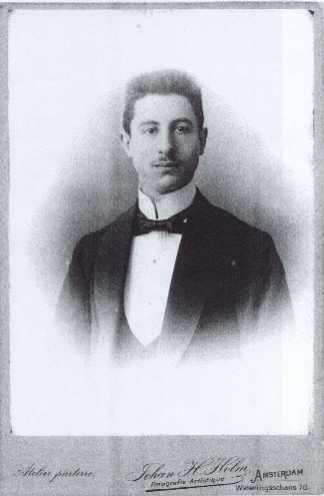
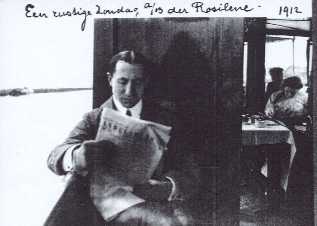
Louis de Vries was born in Rotterdam. He became a well-to-do businessman, owning a chain of hosiery stores (shirts, gloves, etc). Having moved to Amsterdam, he built a fine house around 1910, bordering the small lake of the Vondel Park. Louis was a kindly man, apparently too much so in fact, so that he seems to have been taken advantage of and couldn't cope with the thirties' economic crisis. After which his business declined.
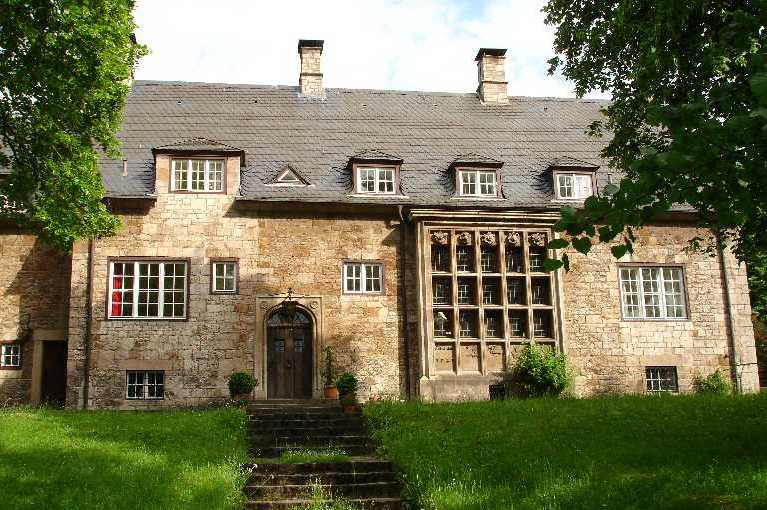
Waldhaus Emilie, known as Villa de Vries in Marsberg, was built in 1921 or 1922 by German architect Henrich Straumer on the behalf of the de Vries and Dalberg families. The house was sold in 1932.
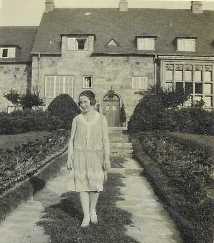
Zus (Betsy) de Vries in front of Waldhaus Emilie in 1928.
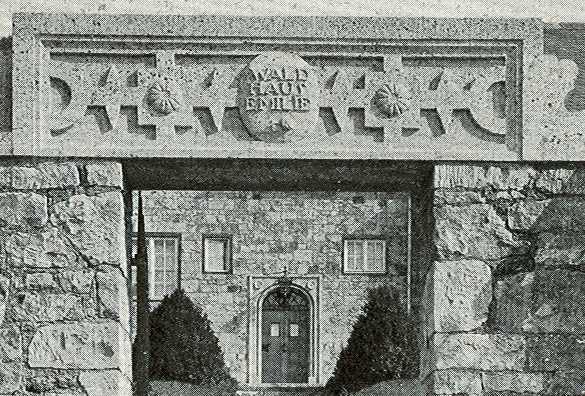

In Memoriam 1921 carved in the stone.2005 version.
In Memoriam Emilie Dalberg 1921 carved in the stone.1924 version.
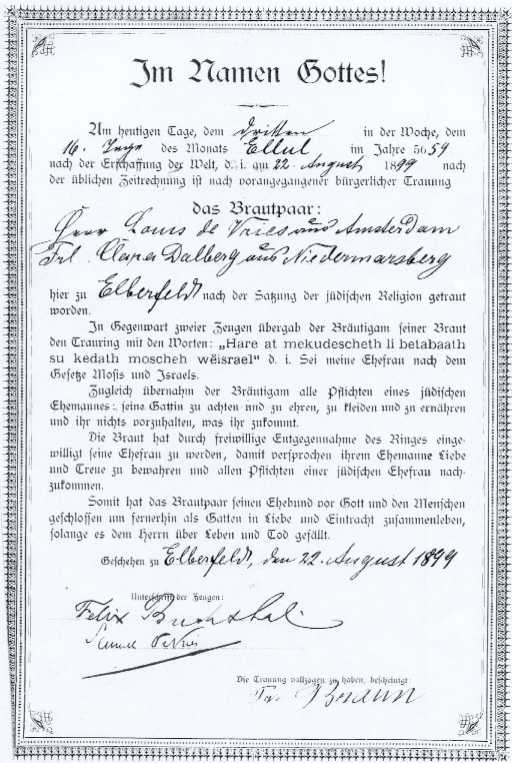

© Wuppertal's City Archives
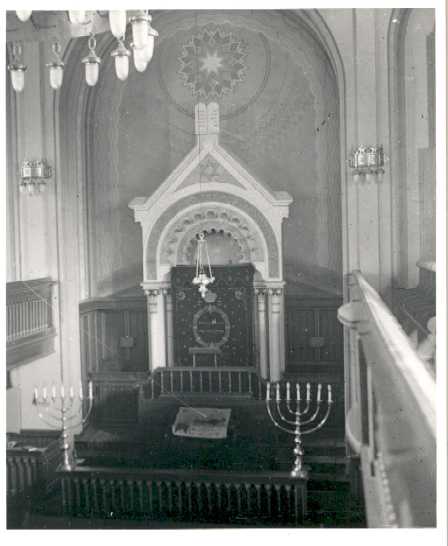
© Wuppertal's City Archives
On August 22, 1899 Louis de Vries married Clara Dalberg at the Elberfeld Synagogue in Germany. They had 3 children: Alexandre (Lex) and twins Bob and Betsy (known as "Zus"- meaning "sister")
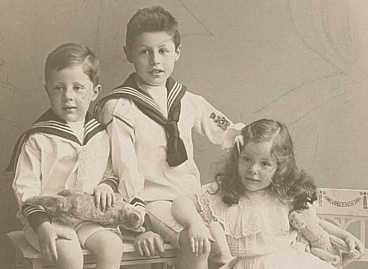
Arie Bob, Lex, Zus de Vries.
The local Elberfeld newspaper with a list of Out-of-Towners who stayed in the major hotels including the de Vries and Dalberg Families on August 21rst, 1899.

Irene de Gunsbourg and Arie Bob de Vries.1936
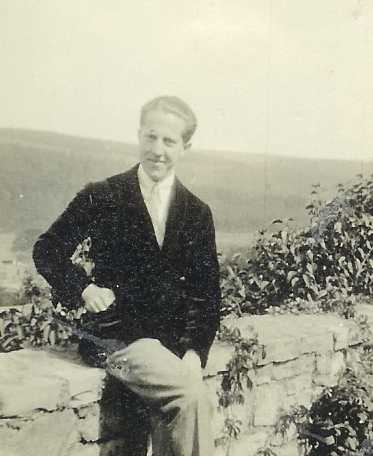
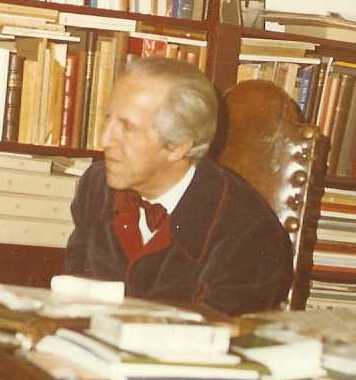
Arie Bob de Vries
Bob de Vries, 1905-1983, had a very distinguished career as an art historian, author of many publications (i.a. an expert on Vermeer) and lecturer in all continents. His first position in 1934 was with the Rijksmuseum in Amsterdam. He managed, together with his wife and daughter, to flee Holland during the war and, by way of Belgium and France, crossed over in perilous circumstances into Switzerland. Before the war ended, he was able to reach England where he was instantly made a major in the allied forces, in order to enable him as an expert to move around in occupied Germany to track down stolen works of art. On return to Holland, he worked again at the Rijksmuseum, where he experienced considerable problems in the wake of his denouncing the Vermeers faked by Van Meegeren, until the controversy was definitively resolved to his advantage. He subsequently became Curator of the Mauritshuis in The Hague where he lived until his retirement, spent in the beautiful manor of Renswoude in central Holland. Bob married Irène de Gunzburg (of the St Petersburg banking family) in 1936 and had two daughters, Nadia and Sacha.
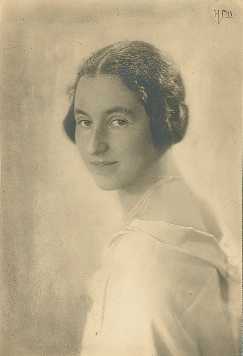
Zus de Vries

Ernst Goldschmidt
Zus (Betsy), 1905-1995, married - in 1931 - Ernst Goldschmidt (born 1906 in Moravia : then Austria, since 1919 Czech Republic). When arriving in Brussels from Vienna in 1933, Ernst first worked at the Museum for Ancient Art, and then started a small art book publishing company (Editions de la Connaissance). He served - as a private - in the Czech forces during the war, first in France, then in England (occasionally organising exhibitions as a sideline) and then again in France after the Normandy landing. Returning to Belgium, he resumed directing his firm until retirement at 75. Over his lifetime he published many prestigious art books as well as exhibition catalogues, and for about 10 years a renowned international contemporary art review (Quadrum). He gave his collection of some 12.000 exhibition catalogues to a French institution, and it is now housed in Marseilles. Zus and Ernst had four children, one of whom died in infancy. The other three are : Leo ,Paul and Sylvia .
When Holland was invaded on 10 May 1940, Lex fell on the third day of hostilities. Clara passed away a few days earlier . After that, being Jewish , Louis kept a low profile, and finally was taken into the safe harbour of a catholic convent in the little village of Eerde in South Holland. His health had been badly affected by the tragic simultaneous loss of his wife and elder son, and a broken man he never left the convent until his death in 1958.

Lex converted to Catholicism in his twenties out of conviction as did his sister Betsy. He eventually became chairman of the "Amitiés catholiques françaises" in Amsterdam.He had been an outstanding law student and specialised in international private law. Lex was a good sportsman, fencing being his forte. A convinced francophile, he spoke perfect French (certainly a good background for his rapprochement with Jacqueline). He was also a man of principle, a staunch patriot and a reserve captain ("ritmeester") of the 1st Regiment of Hussars (cavalry) in the Dutch army. He married Jacqueline de Butler in Morlhon (France) on September 29, 1925.
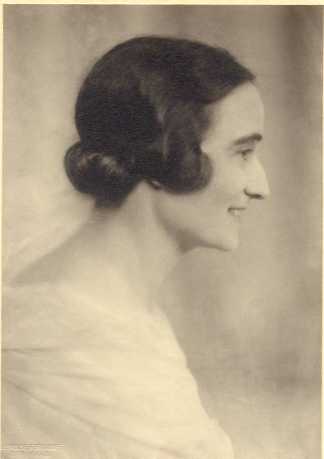
Jacqueline de Vries, nee de Butler.(1899-1928) is the sister of General Jean de Butler
and the daughter of General Remond de Butler
Jacqueline contracted tuberculosis during her wedding trip in Venice (Italy) and passed away in 1928.
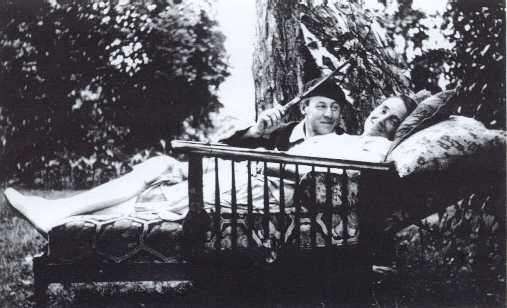
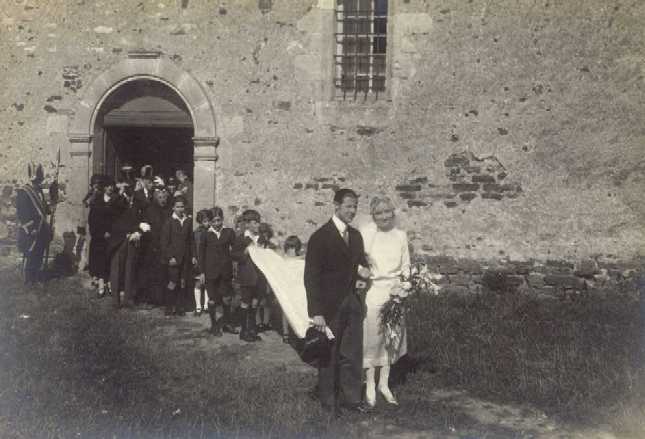
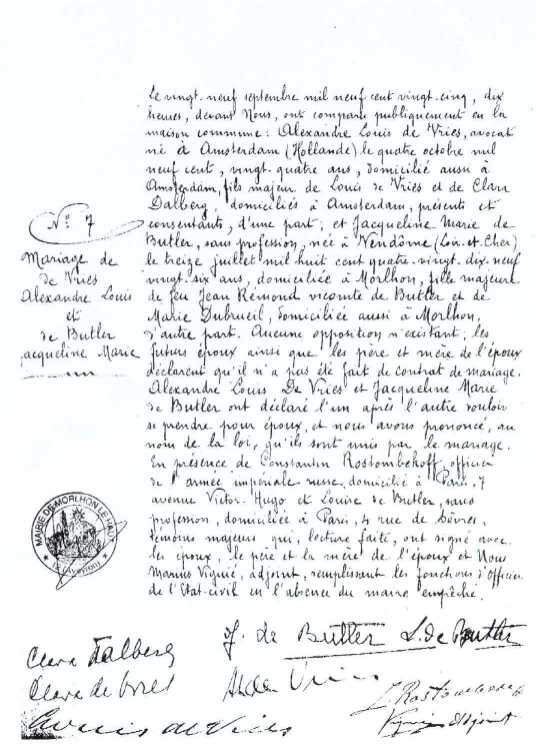
Acte de mariage de Alexandre de Vries et Jacqueline de Butler en 1925.
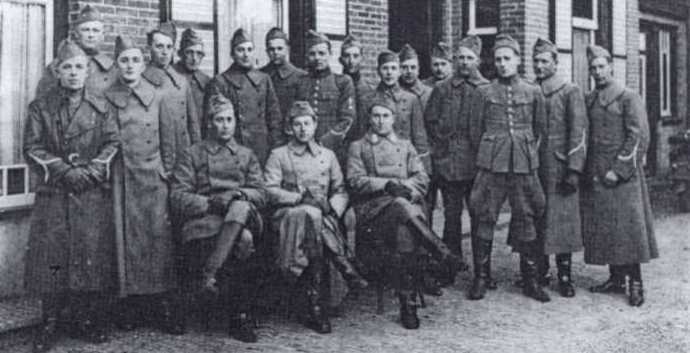
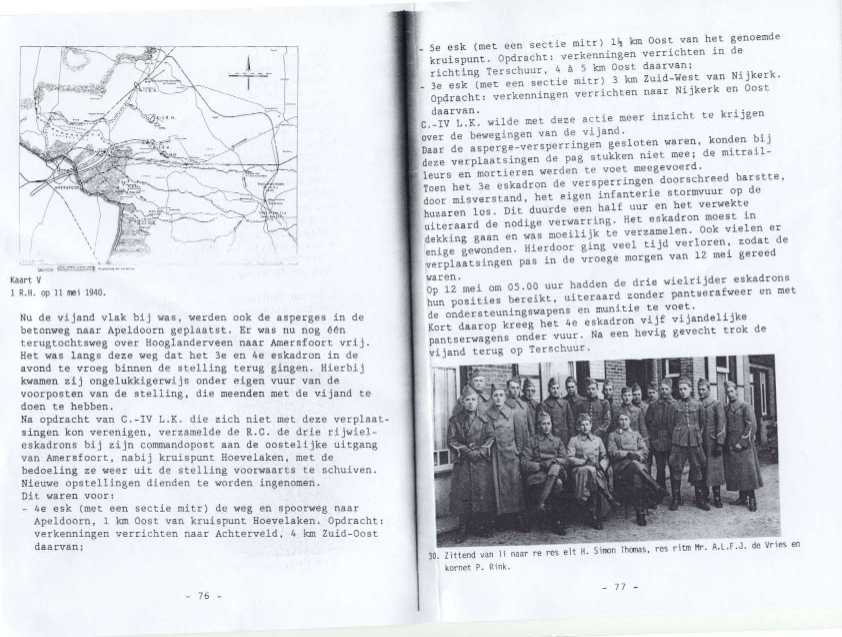
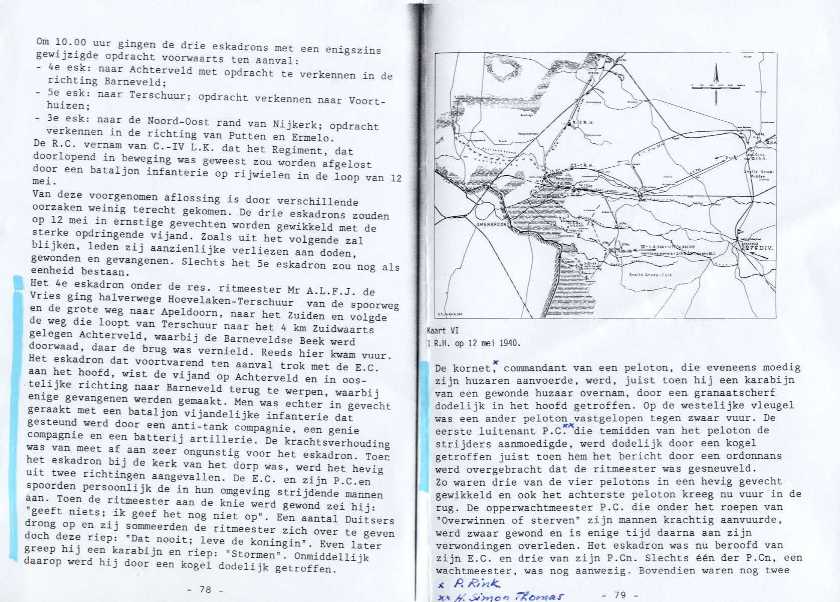
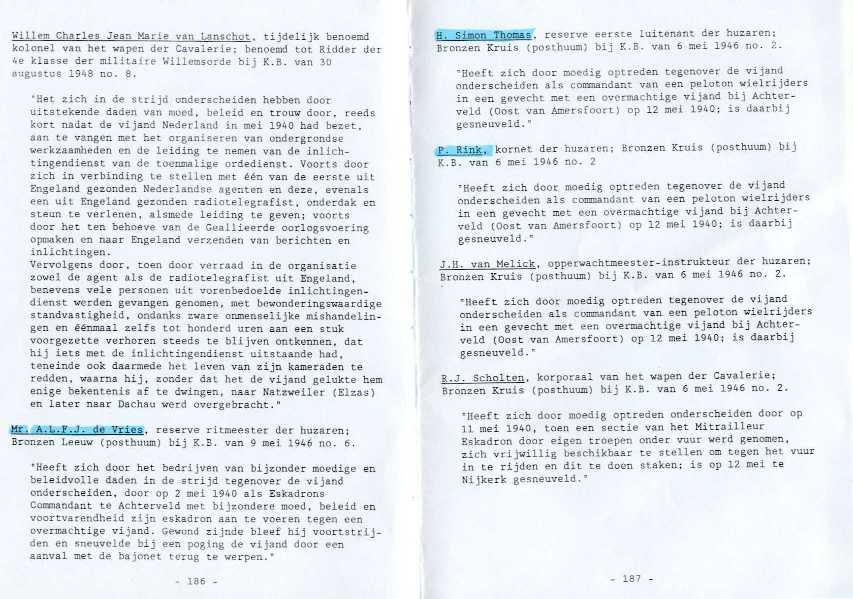
Pages from the book "175 jaar Regiment Huzaren van Sytzama".
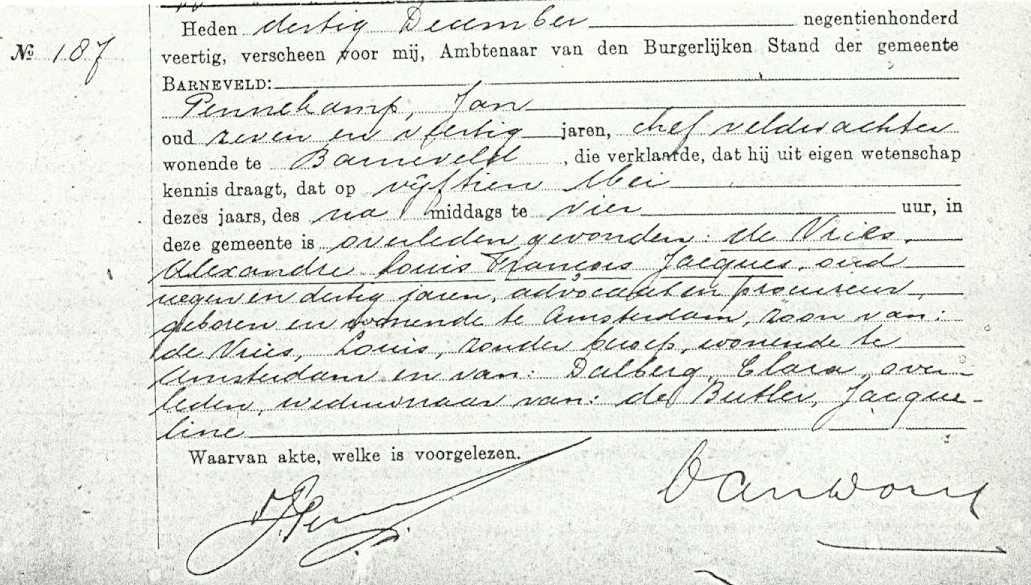
"Today, December 30,1940, Pennekamp, Jan, chief police officer of Barneveld, stated that he knew that on May 15 this year, in the afternoon, at four o'clock, was found deceased: de Vries, Alexandre Louis François Jacques, aged thirtynine years, lawyer and solicitor in Amsterdam, son of: de Vries, Louis, without occupation, living in Amsterdam, and of: Dalberg, Clara, deceased, widower of: de Butler, Jacqueline".
"Army reports state that captain De Vries died on May 12 (Whit Sunday). On that day the squadron under his command became involved in a fight with Germans near the village of Achterveld (west of Barneveld).The enemy forces were comprised of an infantry batallion, an anti tank compagnie, an artillery force and a genie force. They where part of the German 227th Division, namely III 1 R 368.De Vries'squadron made some prisoners of war, although the Germans were stronger in number. Near the church of Achterveld the squadron was attacked from two directions. De Vries was wounded at his knee. He is believed to have said:"It does not matter, I won't give up yet". When some Germans ordered him to surrender, he shouted: "Never that, long live the queen!" He took his carbine, shouted: "Attack" and was immediately killed by a bullet."
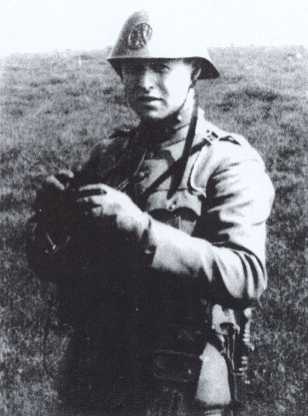
Even after the passing of Jacqueline de Butler, Lex remained a very close friend of the Butler family until his killing by the nazis.In 1940 he was called up and given the command of a Cyclist Fusiliers' unit at Achterveld. Lex was shot at the front line at the head of his troops on 12 May 1940 - Whit Sunday. He was subsequently awarded the Bronzen Leeuw.
Translation of an Obituary of Lex de Vries (unnamed)(clipping dated 21 May 1940, newspaper unknown)
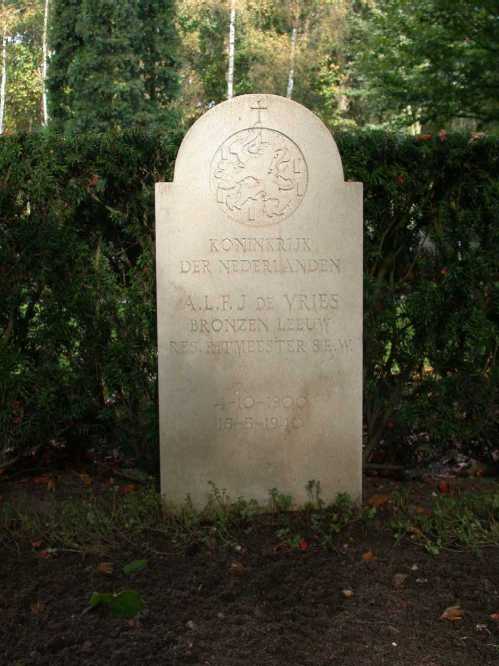
The Beautiful Death
He was a slight but handsome man, gifted with fine intelligence. He loved life and because of it, he sought after its deepest significance. Thus did he look for and find the source and goal of all life : God. He became a militant, intense and convinced catholic, as so many who did not receive the faith at home but had to conquer it by themselves. In his daily practice, he applied the sharpness of his mind to legal subjects, but his interests found matter for deeper reflection in the history and tradition of human civilisation, whose noblest expressions were in harmony with his spirit. Although his nature was markedly intellectual, he was nevertheless a sportsman too. He regularly practised the noble art of fencing with the dazzling foil that requires such flexibility of body and speed of mind. Guard and attack determined his attitude in life in all circumstances. There was something heroic about him, a visible preference for all things demanding personal activity, courage, sacrifice and generosity. When the time came to accomplish his military duties, he chose the arms to which romanticism perhaps still seems most closely attached : the cavalry. This choice typified him, inside and out. When later he returned to society, he kept something military about him notwithstanding his activities as a lawyer. This came out in the strict correctness of form in his dealings with others, a sense of authority and personal autonomy. Life seemed to have no hold over him, however hard it struck him. After a few years of happiness, he lost his young wife as a result of an illness. It didn't break him. He gallantly stood fast even though his domestic life was shattered in a single blow. God, whom he had sought and found, stayed true to him and stood by him in the darkest days of his life. Years went by, but he remained youthful and fresh as if he couldn't age. When his fatherland called at the time of mobilisation, he donned his colourful hussar's uniform once again and left for "somewhere in Holland". During days of leave, he sought to maintain in good stead all that he had had to leave behind. His vitality didn't suffer in the least, but seemed to gain more fire. In the first days that the Netherlands were thrown into the cauldron of war, he fell at the head of his squadron : a beautiful death for himself and his country, tragic only for his very elderly parents to whom in warm deference he had remained a support and a counsellor.
Ritmeester de Vries was burried with the Kornet Rink near the church of Achterveld , where they died.He was reburried the 15th of may 1940 on the Roman Catholic cemetry in Barneveld and again the 7th of december 1973 on the Military field cemetry "Grebbeberg".
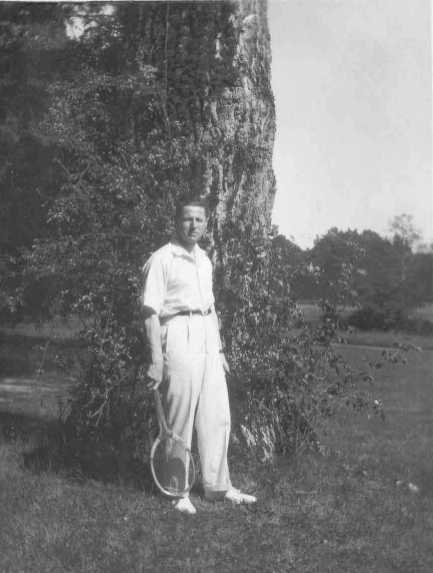
Lex in Sorques(France)in the thirties.
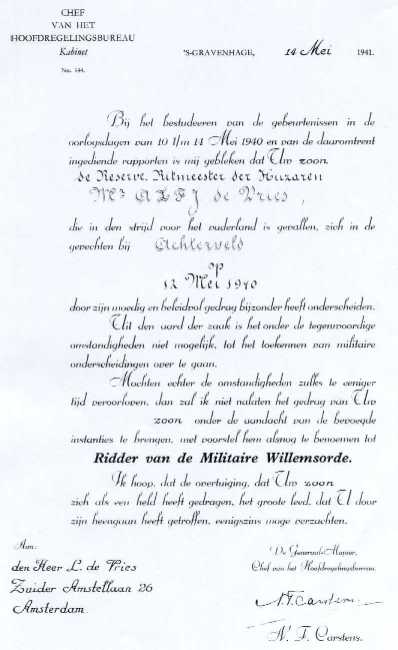
Letter from Major-General Nicholas Carstens to Louis de Vries indicating he will not forget to bring the action of Ritmeester Lex de Vries to the appropriate authorities to appoint him the "Ridder van de militaire Willemsorde when circumstances will permit . Major-General Nicholas Carstens died in a nazi prison camp in 1945 where he had been held since 1942. In 1940 he was the General Officer Commanding the 1rst Army Corps. For an unknown reason Lex de Vries was awarded the Bronzen Leeuw after the war instead of the "Ridder van de militaire Willemsorde".
© Most texts on the de Vries and Dalberg families are from Leo Goldschmidt and Ralph de Butler.
I want to thank for their help: Leo Goldschmidt(Zus older son); M.C.van der Hoog; Dick Veldhuizen, Barneveld Municipal Archives; Harmen Snel, Municipal Archives Amsterdam;Micha de Vries and his friend Reinier Bobbe; Thomas Milo, PR Nedvets ,Special Duties Officer Unifil 1980-'81,83 as well as his friend Richard Brouwer;M.C. van der Hoog and Barbara Brahm of the "Wuppertal's City Archives";Siegfried Stolz, Marsberg's Municipal archives; Brunhilde Schulte (Schulte GmbH );Alexandra Schack von Wittenau; the small working group at the Municipal Archives concerned with the history of the Jewish community in Marsberg. Particularly Mrs. Gudrum Banke, a member of this working group, who has for a number of years devoted a lot of attention to the genealogy of Marsberg families.
© Ralph de Butler
The Butler merchant family of La Rochelle